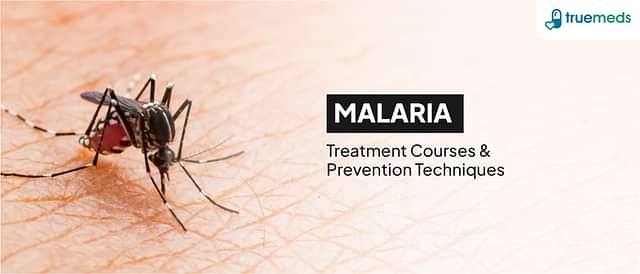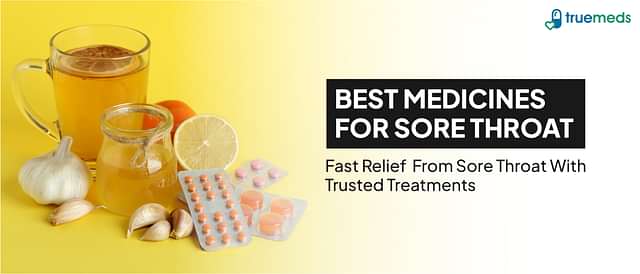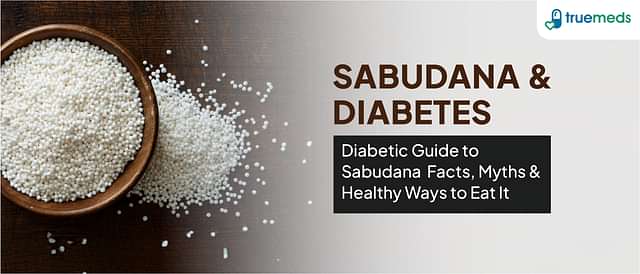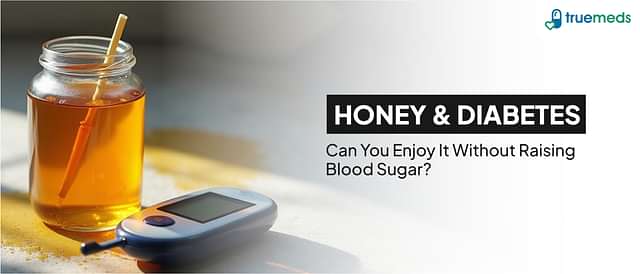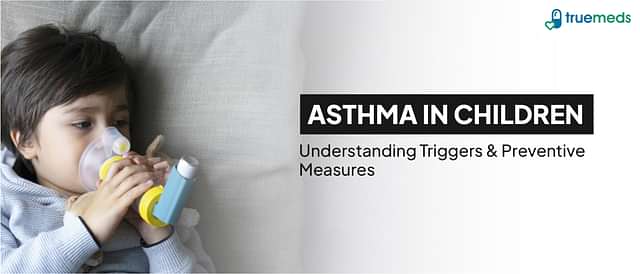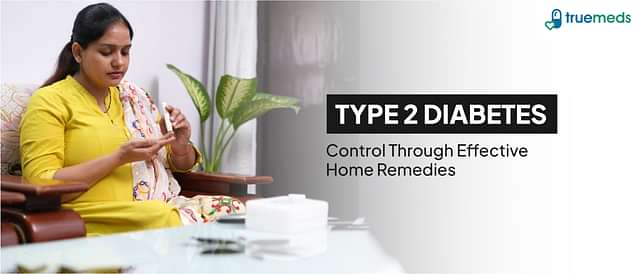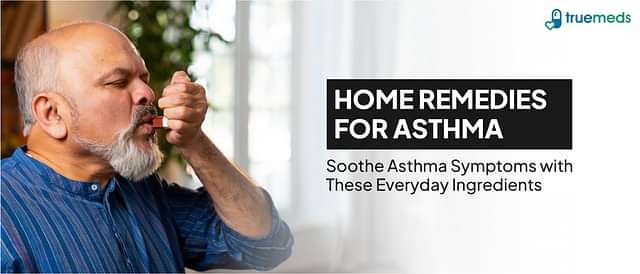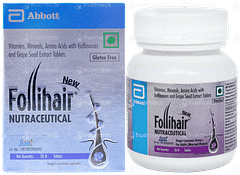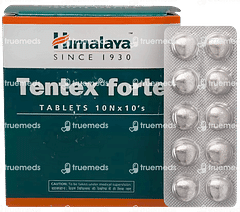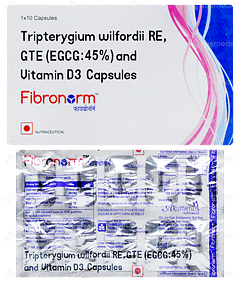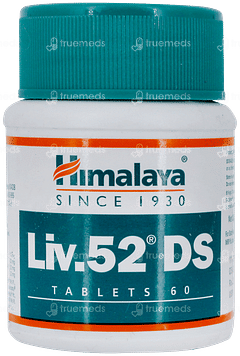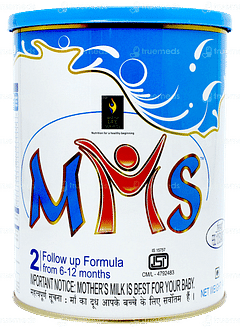Chickenpox
Chickenpox, also known as varicella, is a highly contagious viral illness caused by the varicella-zoster virus. It is characterised by an itchy rash with fluid-filled blisters, fever, loss of appetite, and headaches. While usually mild in children, chickenpox can cause more serious complications in teens and adults. Vaccination is the most effective way to prevent the spread of this disease.
Last updated on : 09 Apr, 2025
Read time : 14 mins

Overview of Disease
Chickenpox is a common childhood illness that most people experience at some point in their lives. It is caused by the varicella-zoster virus, which is highly contagious and spreads easily through direct contact with the blisters or through the air when an infected person coughs or sneezes. Although chickenpox is usually mild and self-limiting, it can cause more severe symptoms and complications in some cases, especially in adults and those with weakened immune systems. In this article, we will discuss the symptoms, causes, and treatment options for chickenpox.
What is Chickenpox?
Chickenpox is a viral infection that primarily affects children but can occur in adults who have not been vaccinated or have not had the disease before. The varicella-zoster virus belongs to the herpesvirus family and causes the characteristic itchy, blister-like rash associated with chickenpox. The virus can also cause fever, fatigue, loss of appetite, and headaches. Chicken pox healing time usually ranges from 4 to 7 days, though in some cases, it may take up to 10 days for full recovery. Sometimes it lead to complications such as skin infections, pneumonia, and encephalitis (inflammation of the brain) in some individuals. Additionally, the virus remains dormant in the body after the initial infection and can reactivate later in life, causing a painful condition called shingles.
Key Factors about Chickenpox
| Category | Details |
| Also Referred as | Varicella |
| Commonly Occurs In | Children younger than 10 years old |
| Affected Organ | Skin, occasionally involving other organs like the brain and lungs in severe cases |
| Type | Viral infection caused by the varicella-zoster virus (VZV), a type of herpes virus |
| Common Signs | Sudden onset of fever, feeling tired and weak, followed by an itchy blister-like rash on the face, scalp, trunk, and other areas |
| Consulting Specialist | Infectious disease specialist or paediatrician |
| Treatement Procedures | Acyclovir for severe cases, calamine lotion and oatmeal baths for itching relief, and paracetamol for fever |
| Managed By | Antivirals (Acyclovir) |
| Mimiciking Condition | Smallpox |
Early Signs of Chickenpox
The early signs of chickenpox can appear 1 to 2 days before the characteristic rash develops. These early symptoms include:
- Fever
- Tiredness and general feeling of malaise
- Loss of appetite
- Headache
- Body aches
Symptoms of Chickenpox
The chickenpox rash typically appears between 10 and 21 days after exposure to the varicella-zoster virus. The rash itself generally lasts between 5 to 10 days, but symptoms may begin earlier. One to two days before the rash, individuals may experience:
- Fever
- Loss of appetite
- Headache
- Fatigue and a general sense of malaise
Once the rash begins, it progresses through three characteristic stages:
- Papules: These are small, raised red bumps that appear over several days. They can be itchy and may feel tender to the touch.
- Vesicles: Within about 24 hours, the papules develop into fluid-filled blisters that can break and leak.
- Crusting: The blisters then dry out, forming scabs or crusts that gradually fall off as the skin heals.
New bumps may continue to appear for several days, meaning that a person may have all three types of lesions—papules, blisters, and scabs—on different parts of the body simultaneously.
The virus is contagious from approximately 48 hours before the rash appears until every blister has crusted over. In healthy children, chickenpox usually causes only mild discomfort. However, in some cases, the rash may spread extensively, covering the entire body, and blisters may even develop inside the mouth, throat, eyes, and on mucous membranes of the urethra, anus, or vagina.
Stages of Chickenpox
The progression of the illness can be broadly outlined as follows:
- Incubation period: The incubation period for chickenpox is typically 14 to 16 days but can range from 10 to 21 days after exposure to the varicella-zoster virus. During this period, the individual may not exhibit any symptoms but is usually contagious 1 to 2 days before the rash appears.
- Rash development: The rash begins as flat, red spots that turn into small, fluid-filled blisters, which eventually crust over. This process usually takes about 7 to 10 days. The rash typically starts on the trunk and spreads to other parts of the body, including the scalp, face, and extremities. Fever, headache, and fatigue often accompany the rash.
- Recovery: Once the blisters have crusted over, usually within 7 to 10 days, the individual is no longer contagious. Full recovery from chickenpox typically occurs within 1 to 2 weeks. However, it's essential to note that the varicella-zoster virus remains dormant in the body and can reactivate later in life, causing shingles.
Causes of Chickenpox
Chickenpox is caused by the varicella-zoster virus, a highly contagious virus that spreads easily from person to person through:
- Direct contact: Touching someone with the chickenpox rash or fluid from their blisters can lead to transmission of the virus.
- Airborne transmission: Coughing or sneezing by an infected individual releases droplets that can be inhaled by others, spreading the virus.
The virus is contagious from 1 to 2 days before the rash appears until all blisters have crusted over, making it important to isolate infected individuals during this time to prevent further spread.
Chickenpox most commonly affects children under the age of 10, with the majority of cases being mild and self-limiting. However, the severity of chickenpox tends to increase with age. Older children and adults typically experience more intense symptoms and are at higher risk of complications compared to younger children.
Infants whose mothers have previously had chickenpox or received the chickenpox vaccine are usually protected in their first year of life due to the passive transfer of maternal antibodies. If such infants do contract chickenpox, it’s often a milder form of the disease. In contrast, babies under one year old whose mothers have never had chickenpox or the vaccine lack these protective antibodies and are more vulnerable to developing severe symptoms.
Children with weak immune systems—whether due to an underlying medical condition or immunosuppressive treatment—are especially prone to severe forms of chickenpox. In these cases, the infection can progress more aggressively, increasing the risk of serious complications such as pneumonia, encephalitis, or widespread skin infections.
Risk Factors
Several factors can increase the risk of developing chickenpox or experiencing complications from the infection, including:
- Children under the age of 10, especially those under 1 year old whose mothers have not had chickenpox or received the vaccine
- Individuals with weakened immune systems, such as those with cancer, HIV, or undergoing chemotherapy or transplants
- Pregnant women who have not had chickenpox
- Smokers
- Healthcare workers and childcare providers
Complications
While most people recover from chickenpox without incident, some may experience complications ranging from mild to severe. The complications of chickenpox include:
Intense itching: The most common complication, particularly distressing for young children, can lead to scratching and potential scarring.
Bacterial skin infections: Secondary infections can develop at scratched sites, causing redness, swelling, and warmth.
Pneumonia: This serious lung complication usually develops 1-6 days after the rash appears, causing fever and cough. It is more common in pregnant women, immunocompromised individuals, and smokers.
Encephalitis and meningitis: These rare but serious neurological complications involve inflammation of the brain or its lining and the spinal cord. Symptoms include sudden fever, headache, stiff neck, nausea, and vomiting.
Toxic shock syndrome: This is a severe condition caused by bacterial toxins.
Reye's syndrome: A rare but serious condition causing swelling in the brain and liver, often associated with aspirin use in children and teens with chickenpox.
Severe illness in specific groups: Newborns, infants, adults, and those with weakened immune systems are at higher risk of severe illness.
Maternal and foetal risks: Chickenpox during pregnancy can lead to low birth weight and limb problems in the baby. If contracted just before or after delivery, the baby is at risk of severe infection.
Prevention of Chickenpox
Vaccination is the most effective way to prevent chickenpox. Some of the preventative measures include:
Routine vaccination: The varicella vaccine is part of the standard childhood immunisation schedule, significantly reducing the risk of infection. It is typically given in two doses—the first at 12–15 months and the second at 4-6 years.
Catch-up vaccination: Older children and adults who have not had chickenpox or the vaccine can receive catch-up doses to protect against the virus.
Vaccination for high-risk groups: The vaccine is especially important for healthcare workers, teachers, child care employees, international travellers, and those in close contact with immunocompromised individuals.
Herd immunity: Widespread vaccination helps protect those who cannot receive the vaccine, such as infants, pregnant women, and immunocompromised individuals, by reducing the overall circulation of the virus in the community.
In addition to vaccination, practicing good hygiene, such as washing hands frequently and avoiding close contact with infected individuals, can help prevent the spread of chickenpox.
Diagnosis & Tests
Diagnosing chickenpox is usually based on the characteristic rash and a patient's history of exposure. However, in some cases, additional tests may be required:
Physical examination: A doctor will examine the characteristic rash, which typically appears as itchy, fluid-filled blisters on a red base that eventually crust over.
Medical history: The doctor will ask about recent exposure to chickenpox, vaccination status, and the timing and progression of symptoms.
Blood tests: Blood samples may be tested for antibodies to the varicella-zoster virus, which causes chickenpox. These tests can help determine if a person has been exposed to the virus or has developed immunity.
Viral culture: In some cases, a sample of fluid from a blister may be collected and sent to a laboratory for viral culture to confirm the presence of the varicella-zoster virus.
Polymerase chain reaction (PCR) test: This highly sensitive test can detect the presence of the virus in a sample of fluid from a blister or in a blood sample.
Treatment & Management
Treatment for chickenpox primarily focuses on relieving symptoms and preventing complications. Here are some ways to manage the condition:
1. OTC Treatments for chickenpox
- Calamine lotion, containing zinc oxide or zinc carbonate, is a common over-the-counter (OTC) remedy for chickenpox. It helps soothe skin irritation due to its mild antiseptic and protective properties. It can be found in some topical formulations to aid in healing and reduce itching.
- Apply calamine lotion, petroleum jelly, or fragrance-free, anti-itch lotion to the skin to reduce itching and discomfort.
- Use acetaminophen to reduce fever. Avoid aspirin and ibuprofen, as they may lead to serious complications like Reye's syndrome and bacterial skin infections.
- Oral antihistamines can help alleviate itching in children. Avoid applying antihistamines directly to the skin to prevent allergic reactions.
- In high-risk individuals, such as those older than 12 years, pregnant women, those with chronic skin or lung diseases, or those with weakened immune systems, antiviral medications like acyclovir, valacyclovir or famciclovir may be prescribed. These medications work best when given within 24 hours of the rash onset.
2. Other remedies for chickenpox
- Take lukewarm baths with colloidal oatmeal or baking soda to relieve itching.
- Keep fingernails trimmed short and use socks or mittens on young children to prevent scratching, which can lead to skin infections.
- Keep the affected person cool and hydrated. Use cool, moist rags on the rash to reduce itching and encourage fluid intake to aid recovery.
- Ensure the person gets plenty of rest to support the body's healing process.
By following these treatment and management strategies, you can help alleviate the symptoms of chickenpox and promote a smoother recovery.
Living with Disease
When living with chickenpox, there are several important points to keep in mind:
Keep the affected person at home until all blisters have formed scabs and no new blisters develop, which usually takes about a week. This helps prevent the spread of the virus to others.
Wash hands frequently, especially after touching the rash, to minimise the risk of spreading the virus or developing secondary infections.
Discourage scratching the blisters to prevent bacterial infections and scarring. Use socks or mittens on young children if necessary.
Encourage hydration with water and sugar-free fluids.
Avoid hard, spicy, or salty foods that may irritate the mouth sores.
Dress the person in loose, comfortable clothing to minimise irritation to the skin.
Keep the room temperature cool and use lightweight bedding.
When to See a Doctor?
If you or your child experience symptoms such as a high fever over 39°C that persists for more than a few days, severe headache, stiff neck, or confusion, it is crucial to seek medical attention promptly. Other concerning signs include difficulty breathing or chest pain, severe abdominal pain or vomiting, and a rash that becomes very red, warm, or tender, which may indicate a bacterial infection. Dizziness, disorientation, or a rapid heartbeat, as well as blisters that become infected or do not heal, also warrant immediate medical consultation. Additionally, if you are pregnant, have a weakened immune system, or manage a chronic health condition, it is important to consult your doctor as soon as you suspect chickenpox.
Key Takeaways
Chickenpox is a highly contagious viral infection caused by the varicella-zoster virus, characterised by an itchy, blister-like rash.
Symptoms typically appear 10–21 days after exposure and include fever, fatigue, loss of appetite, and a distinctive rash that progresses from red bumps to fluid-filled blisters and eventually scabs.
The varicella vaccine is the most effective way to prevent chickenpox. Two doses are recommended for children, adolescents, and adults who have never had chickenpox or been vaccinated.
Treatment primarily focuses on relieving symptoms, including taking lukewarm baths, applying anti-itch lotions, using acetaminophen for fever, and keeping the affected person cool, hydrated, and well-rested.
Most people recover from chickenpox without complications, but in some cases, medical attention may be necessary, especially for infants, adults, and those with weakened immune systems.
FAQs
How to heal chicken pox fast?
While there is no cure for chickenpox, antiviral medications, home remedies like oatmeal baths and calamine lotion, and fever reducers can help manage symptoms and speed up recovery.
Can I get chickenpox twice?
It is highly unlikely to get chickenpox twice, as the body develops immunity to the varicella-zoster virus after the first infection. However, the virus may reactivate later as shingles.
How does chickenpox spread?
Chickenpox spreads through direct contact with an infected person or contaminated surfaces, as well as through airborne transmission when an infected person coughs or sneezes.
What things should be avoided in chicken pox?
Scratching the blisters, taking aspirin, and exposing others to the virus should be avoided. Scratching can lead to infections and scarring, aspirin may cause Reye's syndrome, and exposure can spread the virus.
Can chicken pox heal in 7 days?
In most cases, chickenpox symptoms last for 7–10 days. However, the duration may vary depending on factors such as age, overall health, and the severity of the infection.
What is the best way to remove chicken pox blisters?
There is no specific method to eliminate chickenpox. The best approach is to manage symptoms, prevent complications, and allow the body to fight off the virus naturally.
Can we take a bath during chicken pox infection?
Yes, taking warm or cool baths with oatmeal bath products can help reduce itching and provide relief from chickenpox symptoms. However, avoid using harsh soaps or scrubbing the blisters.
How to stop chickenpox from spreading?
Vaccination is the most effective way to prevent chickenpox. Isolating infected individuals, maintaining good hygiene, and avoiding close contact with others can also help reduce the risk of transmission.
Is chicken pox painful?
Chickenpox can cause discomfort and pain, particularly due to the itchy rash and blisters. However, the level of pain varies from person to person and can be managed with appropriate treatment.
References
Centers for Disease Control and Prevention. (2021, April 28). Chickenpox (varicella). https://www.cdc.gov/chickenpox/index.html
National Health Service. (2021, July 21). Chickenpox. https://www.nhs.uk/conditions/chickenpox/
Johns Hopkins Medicine. (n.d.). Chickenpox. https://www.hopkinsmedicine.org/health/conditions-and-diseases/chickenpox
U.S. National Library of Medicine. (2021, May 26). Chickenpox. MedlinePlus. https://medlineplus.gov/chickenpox.html
Check Related Salts
Browse Other Conditions
Latest health articles
Top Health Essentials
Disclaimer
Top-Selling Medicines:
...View more
Top-OTC medicines:
...View more
Company
About UsHealth ArticleHealth StoriesDiseases & Health ConditionsAll MedicinesAll BrandsNeed HelpFAQSubscribe
Registered Office Address
Grievance Officer
Download Truemeds

Contact Us
Our customer representative team is available 7 days a week from 9 am - 9 pm.
v3.7.6
Our Payment Partners









